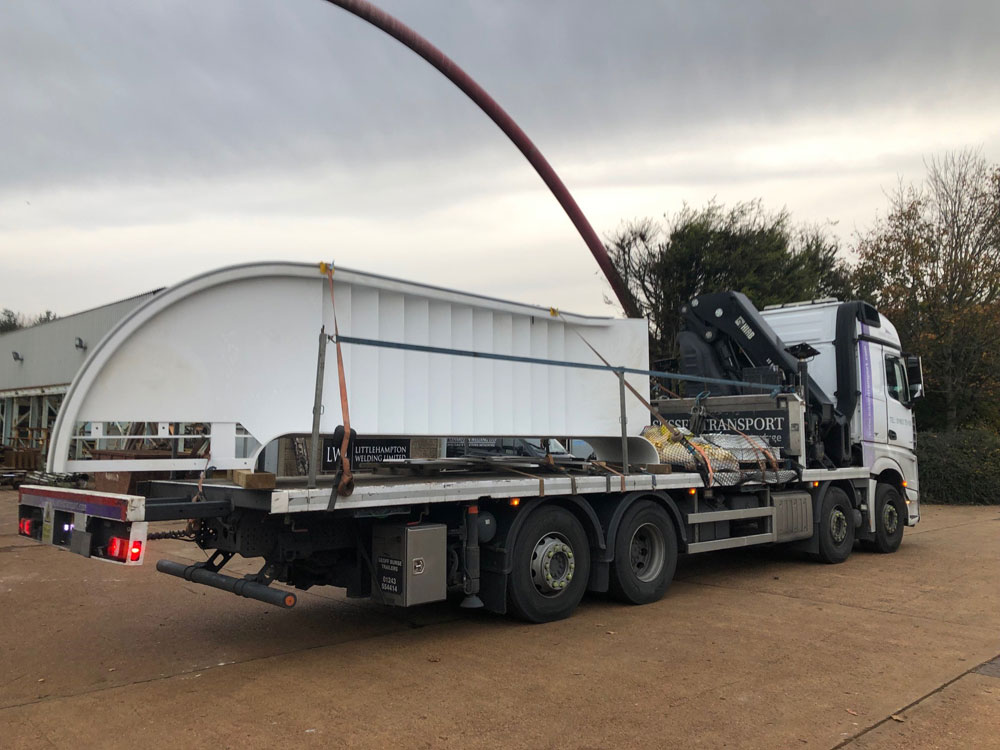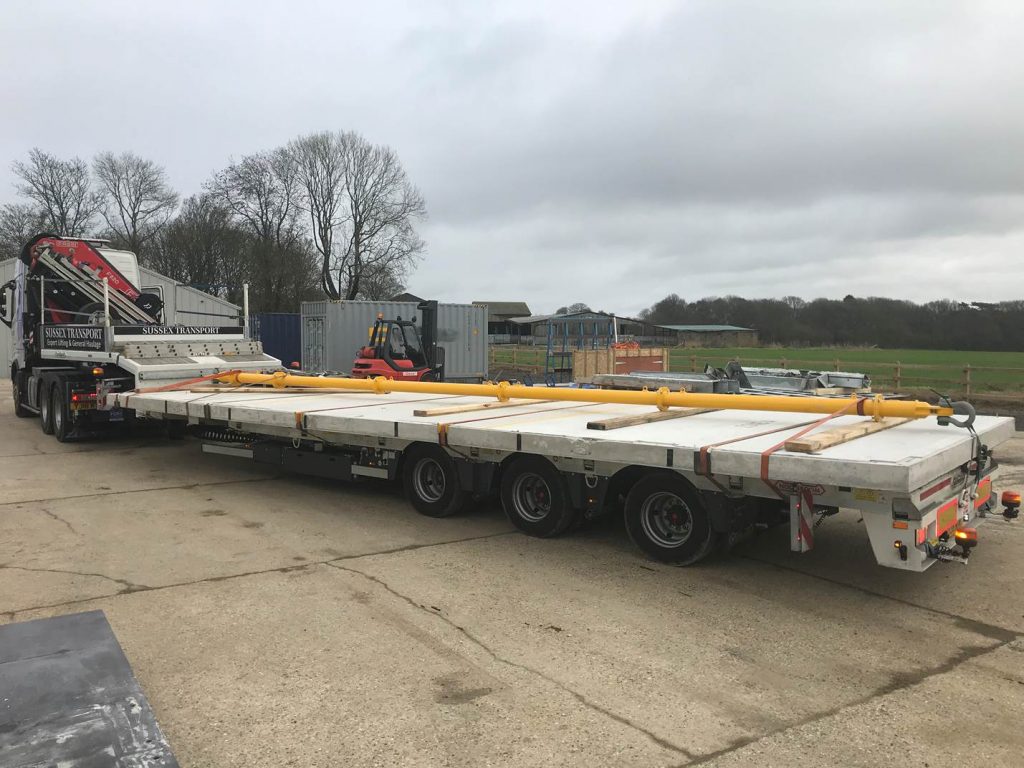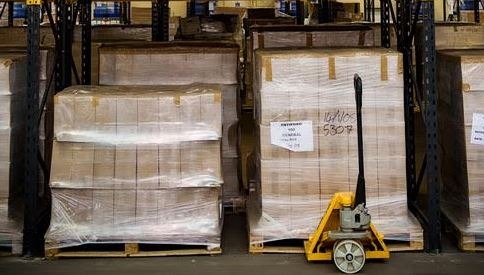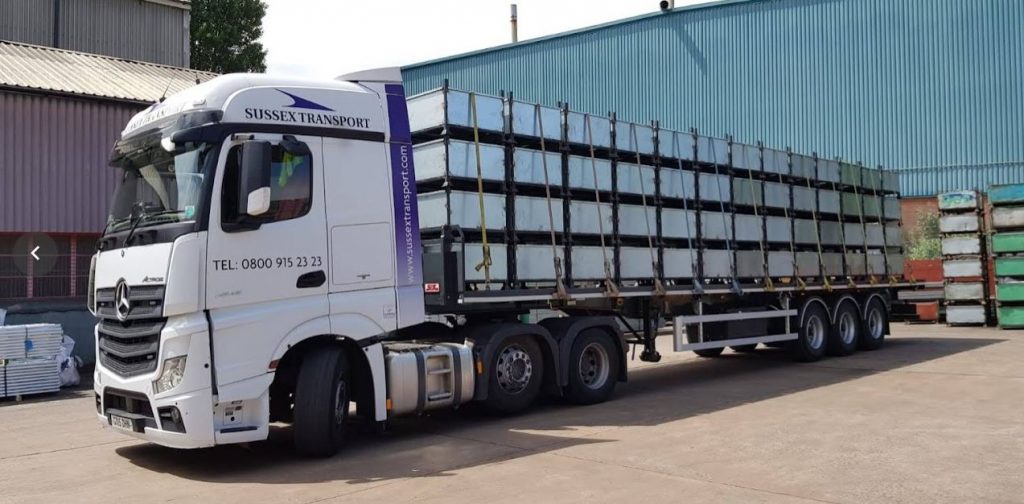When transporting goods, one of the most important aspects is load security. It is crucial for several reasons, not least of which is safety. An insecure load can quickly (or slowly) become loose, and once that happens, it can become the cause of an accident where the driver or other road users might be injured (potentially even fatally). In addition to safety, there are other reasons why securing loads is essential. For instance, an insecure load can damage the goods and / or the vehicle itself.
Given all these factors, it’s clear that securing loads should be a top priority for anyone involved in goods transport and haulage. Professional drivers (like ours) are highly trained and responsible, they have the power to reject poorly wrapped goods or unsafe loads and will always ensure security before leaving site.

As with any safety measure, there are common mistakes made when it comes to loading and securing cargo. To help avoid these mistakes, we’ve compiled a list of best practices for load security if you are not using the professionals. Even if you are then you can help ensure the security of your goods and vehicles by following these and other safety tips aimed to ensure your goods will reach their destination safely and without incident.
Load Security – Haulage
- Always Sweep and Clean the bed of your truck/vehicle – You should always sweep and clean the bed of your vehicle. This will help ensure that there are no sharp objects or other debris that could damage the load during transit.
- Remove Contaminants – For maximum efficiency, clear the ground of dirt, oil, ice, and grease to reduce friction. Clean surfaces can also prevent items from becoming loose and sliding while in transit. This way, you can be sure that cargo will not move when exposed to directional or braking forces. If a surface is not cleaned correctly, it can cause issues with securing the load and might result in it coming loose during transit
- Consider Additional Surface Friction – Accidents occur when drivers and operators wrongly overestimate the restraints needed to secure cargo on their vehicles. Dynamic forces are greater than static forces; for instance, fastening a load in motion necessitates significantly more strength than when the same load is at rest. To further ensure the security of your goods, tie-down straps can be reinforced with friction-increasing materials like rubber mats. These methods may even increase friction by more than 100%, reducing movement and the need for additional load-securing devices.
Load Security – Pallets
- Stable Stacking of Pallets – Consider each item’s weight when stacking goods to ensure balanced and stable loading. Stacking pallets too high can lead to instability and a higher risk of the load coming loose while in transit. Additionally, pallets should always be secured with straps, cling wrapping (multiple layers secured to pallet), Heat Shrink Wrap, or even nets to prevent them from shifting during transport.
- Effective Securing of the Goods to the Pallet – Finding the right security system for your load is difficult since vehicles and goods differ. You don’t want a securing solution that keeps your load motionless but simultaneously creates risks such as manual handling or working heights. Webbing straps and chains are commonly used; however, they may not be suitable when dealing with fragile products or living items due to potential harm inflicted while in transit. Variables always need to be considered.
- Location on vehicle bed – Goods should always be stacked on or as close to the truck’s bed as possible and secured with additional lashing straps if needed.
- Positioning – Keep the load secure by positioning it against the headboard, with its center of gravity as low as possible.
- Still unsure? – If there’s a chance that items could still slide off or move, consider putting them into boxes, crates, or frames before loading. If the weight can’t be placed securely up against the headboard for whatever reason, then think about how else you can immobilise it—straps, chocks, and blockers may all be needed in some instances.
- Keep the headboard strong – Finally, don’t forget to repair any damage on both sides of the lorry headboard: doing so is key to ensuring your entire cargo system functions well from the start until the finish.
The Use of Straps, Chains, Lashings or Tie Downs
While you can utilise almost all products for either type of cargo binding, distinct features differentiate the calculations of when to use each. Your straps, chains and lashings will all be rated and manufacturers’ recommendations must be followed. You should also be very aware of the vehicle’s curtain strength and ability to hold the loads kept inside. Discuss this with your transport manager if you are unsure or your equipment is not clearly marked.
Use the Bulkhead (Flatbeds)
When it comes to control of goods, flatbed bulkheads are indispensable. These devices are fixed at the front end of a flatbed trailer to restrict the forward movement of the load and to safeguard drivers when carrying heavy payloads. You’ll find two primary kinds of bulkheads- wrap-around and flat varieties – each designed with unique benefits for efficient transport practices.
- Flat Bulkhead
A flat bulkhead is ideal if you won’t be carrying goods or equipment that needs additional support along its sides to remain safe (other than straps or chains). Equally useful if you often carry goods wider than the vehicle when compared to wrap around or railed vehicles. Flat bulkheads are often seen made from metal / steel frames and wood or metal inserts. - Wrap Around Bulkheads or Rails
A wrap-around bulkhead, or rails, offer the extra strength necessary to ensure a load stays in place while providing the convenience of quickly securing it with side rail kits and panels. Again with rails and lift up panels you need to be aware of their load capacities.
Spreading the weight correctly
When loading a vehicle, ensure the load is evenly distributed throughout the bed. An unevenly distributed load can cause instability and strain particular truck or trailer parts. This can be dangerous, as it can cause sudden shifts in the weight of the load and increase the risk of an accident. note: Sometimes spreading the load evenly is just not possible. But before transporting any goods, ensure they are correctly loaded and secured to prevent tipping accidents.
At Sussex Transport, we understand how important it is to ensure loads are kept secure during transport, so we always take extra steps to guarantee safety for everyone involved. We always take the time to carefully plan out load distribution and proper load security measures for all our deliveries and use only the highest quality materials for tying loads down. We strive to provide a safe, reliable service to ensure your goods arrive on-time and in excellent condition every time.
Contact our transport planners and team today to discuss your nationwide road haulage requirements.



